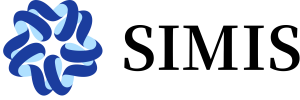Isoresidual fibration and resonance arrangements
Organizer
Yuwei Fan
Speaker
Time
Wednesday, March 13, 2024 1:30 PM - 3:30 PM
Venue
A3-1-101
Online
Zoom 928 682 9093
(BIMSA)
Abstract
Meromorphic 1-forms on the Riemann sphere with prescribed orders of singularities form strata endowed with period coordinates. Fixing residues at the poles defines a fibration of any stratum to the vector space of configurations of residues. In a joint work with Quentin Gendron, it has been proved that for strata of 1-forms with only one zero, the isoresidual fibration is a cover of the space of configurations of residues ramified over an arrangement of complex hyperplanes called the resonance arrangement. Using combinatorics of decorated tree and the dictionary between complex analysis and flat geometry, we give a formula to compute the degree of this cover and investigate its monodromy. In a more recent work with Dawei Chen, Quentin Gendron and Miguel Prado, we investigate the case of strata with two zeroes where isoresidual fibers are complex curves endowed with a canonical translation structure. Singularities of this structure provide topological invariants of the fibers that refine the Euler characteristic and still lack an interpretation in terms of enumerative geometry.
Speaker Intro
Guillaume Tahar obtained his Ph.D from Université Paris Diderot, under the supervision of Anton Zorich. He was a senior postdoctoral fellow at the Weizmann Institute of Science and joined BIMSA as an Assistant Professor in 2022. His research focuses on geometric structures on surfaces, with applications to moduli spaces and dynamical systems. He contributed to the study of various flavours of geometric structures, including translation surfaces, polyhedral metrics, cone spherical metrics and complex affine structures. His approach typically involves a mix of complex analysis, geometric constructions, and combinatorial reasoning.
His key results include the proof of the existence of closed geodesics in dilation surfaces, the complete characterization of configurations of local invariants realized by a differential on a Riemann surface and the establishment of Grünbaum's asymptotic classification for simplicial line arrangements with few double points.
His recent research interests include the topological interpretation of quantum invariants of knots, the counting of BPS states in quantum field theory and holomorphic dynamics in higher dimensions.
His key results include the proof of the existence of closed geodesics in dilation surfaces, the complete characterization of configurations of local invariants realized by a differential on a Riemann surface and the establishment of Grünbaum's asymptotic classification for simplicial line arrangements with few double points.
His recent research interests include the topological interpretation of quantum invariants of knots, the counting of BPS states in quantum field theory and holomorphic dynamics in higher dimensions.




